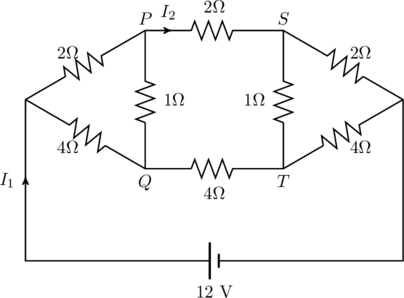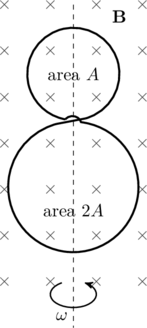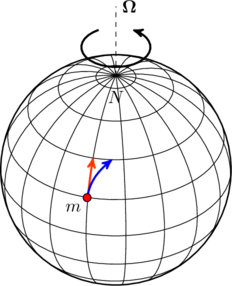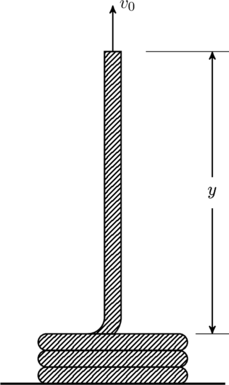JEE Advanced 2012 Paper 1, Question 12
For the resistance network shown in the figure, choose the correct option(s).

- The current through
 is zero.
is zero.  A.
A.- The potential at
 is less than that at
is less than that at  .
.  A.
A.
Solution
We can speed up the solution by noticing the mirror symmetry of the circuit. Let the current ![]() split into two parts
split into two parts ![]() and
and ![]() at the node
at the node ![]() (see figure). Similarly, let the currents going into node
(see figure). Similarly, let the currents going into node ![]() be
be ![]() and
and ![]() . If we were to reverse the polarity of the
. If we were to reverse the polarity of the ![]() battery connected to the circuit, all currents would simply reverse direction, but their magnitudes would remain the …
battery connected to the circuit, all currents would simply reverse direction, but their magnitudes would remain the …


